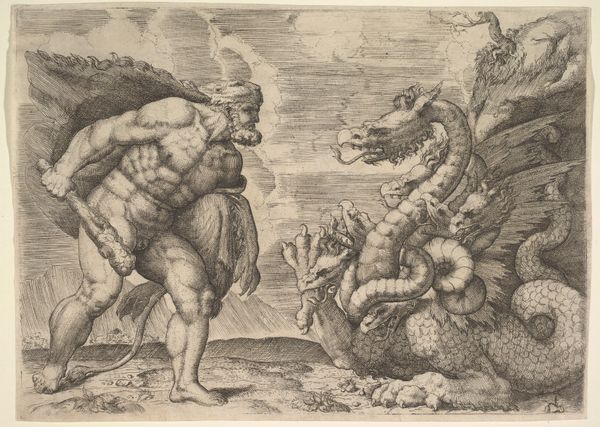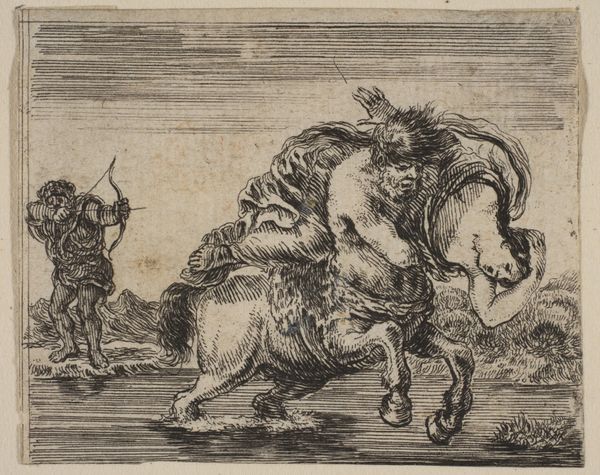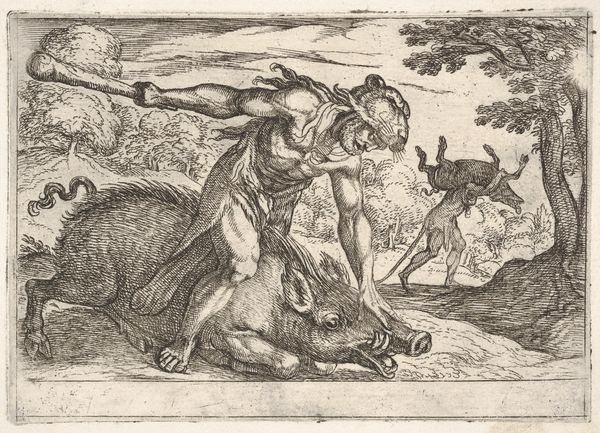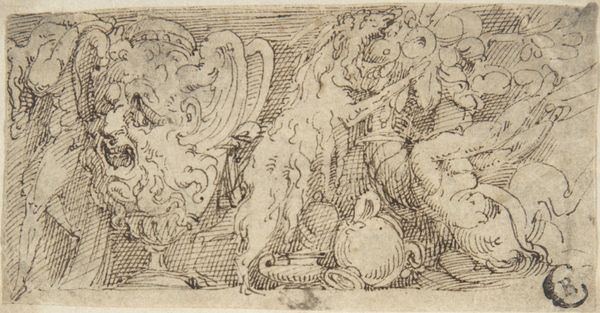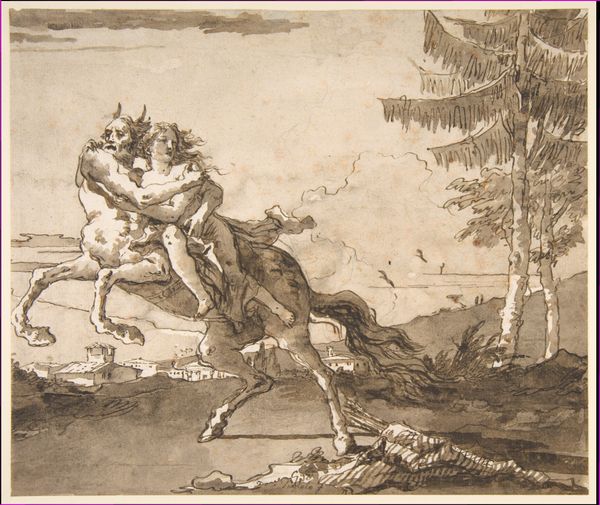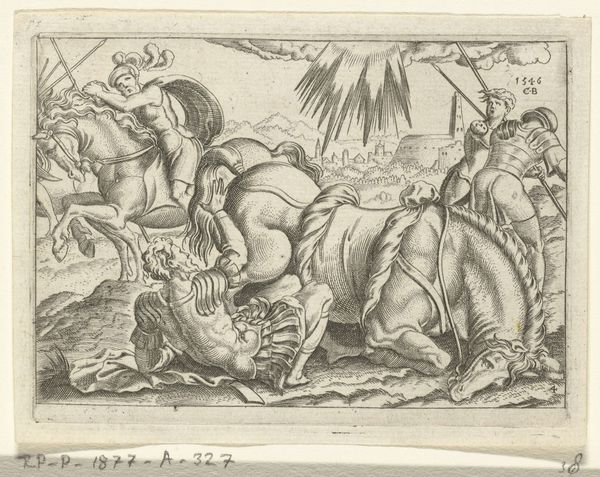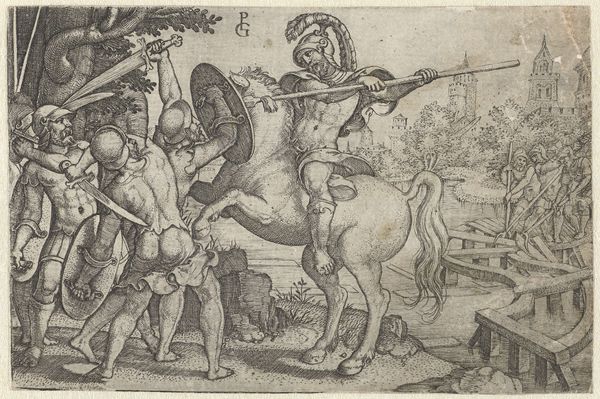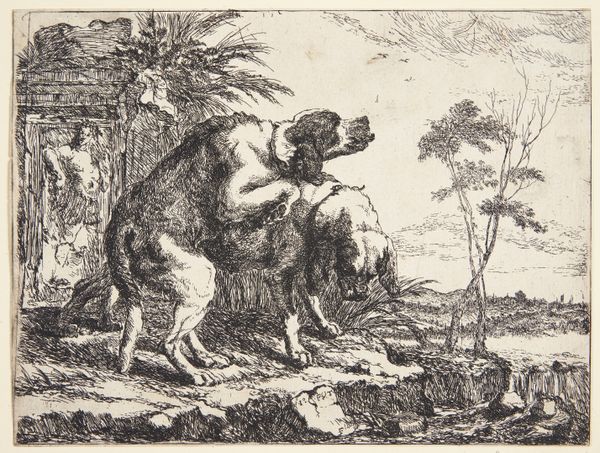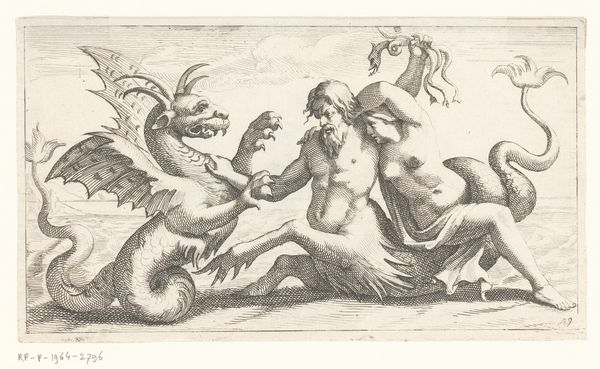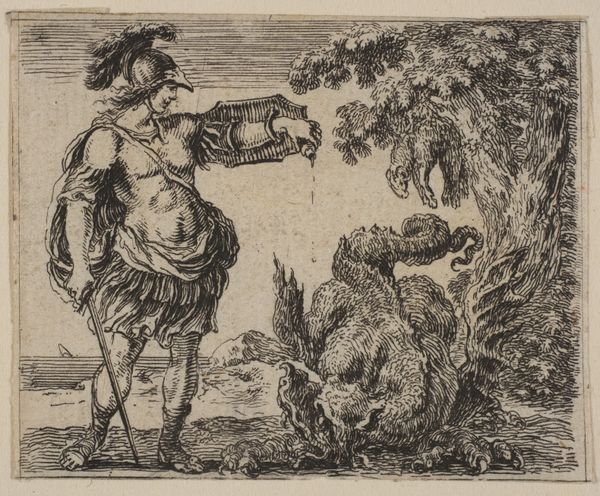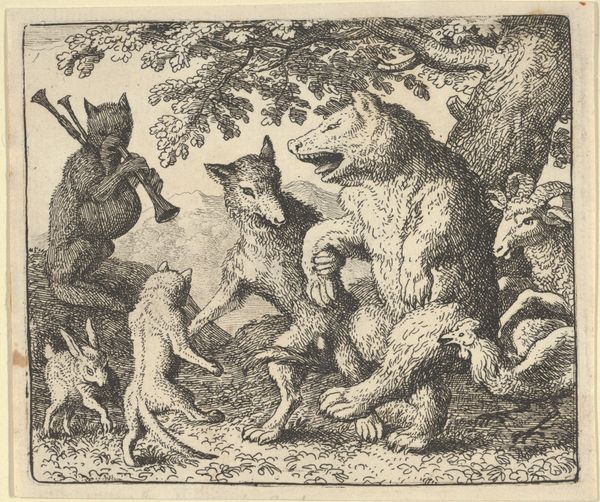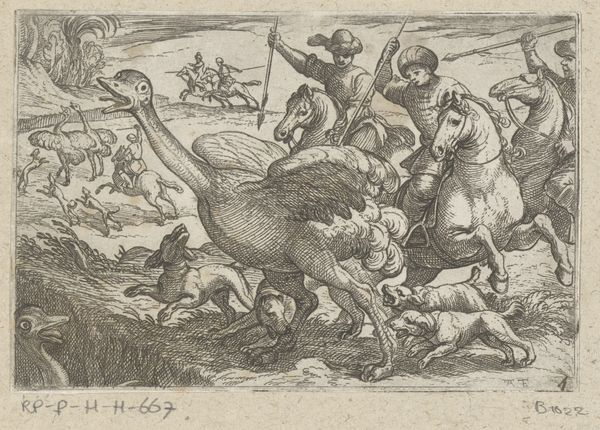
print, intaglio, engraving
# print
#
intaglio
#
figuration
#
11_renaissance
#
mythology
#
history-painting
#
italian-renaissance
#
engraving
Dimensions: sheet (trimmed within plate mark): 21.9 x 28.3 cm (8 5/8 x 11 1/8 in.)
Copyright: National Gallery of Art: CC0 1.0
Battista Angolo del Moro made this print of Hercules and the Hydra in the mid-16th century using a technique called etching. An etcher would have coated a copper plate with a waxy substance called a ‘ground’, then scratched an image into it with a needle. The plate was then immersed in acid, which bit into the exposed metal. This painstaking process, repeated as needed, created the lines that hold ink. Once the plate was cleaned, ink was forced into these lines, and the surface wiped clean. Finally, the image would appear when the plate was pressed against a sheet of paper. The real skill was controlling the depth and quality of the etched line, the only means by which to create tone, texture, and the illusion of form. Look closely and you can see the effects, from the rippling muscles of Hercules to the scaly skin of the Hydra. Etching was a relatively new process at this time, allowing for looser, more spontaneous effects than traditional engraving. Through its lines, a whole world could be brought into being.
Comments
No comments
Be the first to comment and join the conversation on the ultimate creative platform.
